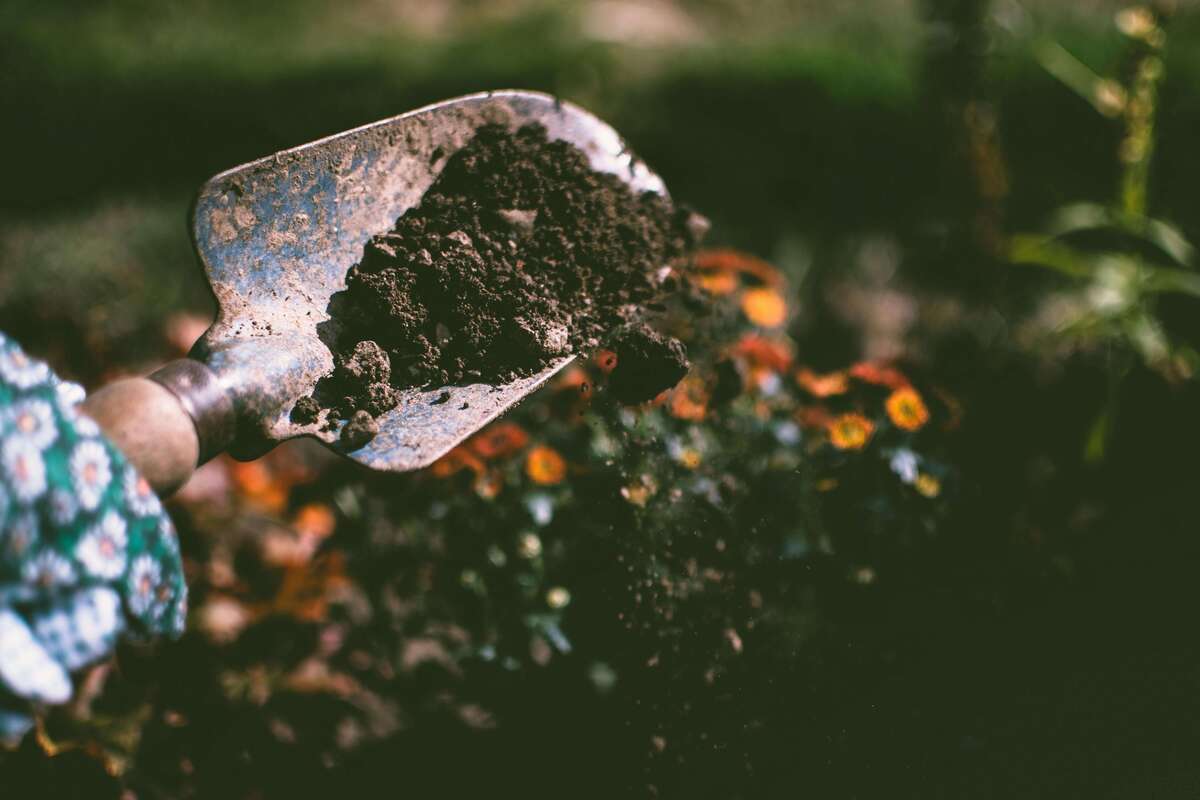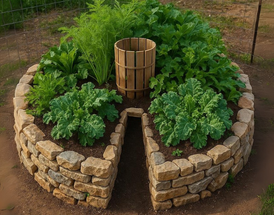Aug 22nd 2025
Discover Keyhole Gardens & How to Build Them
- Discover the magic of keyhole gardens. They offer a savvy way to recycle organic waste and nourish soil.
- These gardens use less water, yet you get maximum growth and longer growing seasons.
- Brick, stone, wood, and even planter boxes—you can build a keyhole garden with almost any material.
Have you ever heard of a keyhole garden? Well, if you’re looking for a creative, low-maintenance way to grow herbs, vegetables, or flowers—especially in dry, compact spaces—it’s worth learning how to build a keyhole garden.
This clever concept first appeared in arid regions of Africa, where healthy soil is hard to come by. But keyhole gardens have since gained popularity worldwide, and it’s easy to see why. They’re great in small spaces, they conserve water, and they add tons of nutrients to your soil.
Best of all, you don’t have to be a master builder—or tear up your backyard—to start one. So let’s explore how to build a keyhole garden and ensure it thrives.
What Is a Keyhole Garden?
A keyhole garden is a raised, circular bed with a small notch or pathway built into it. Some people think it looks like a pie with a slice missing, but the name “keyhole” comes from how it looks from above—like an old-fashioned keyhole in a door.
The notch is the genius bit. It allows easy access to the center, where a compost bin sits. This central bin is the machine that powers epic growth. It takes kitchen scraps you were going to toss in the garbage, breaks them down, and turns them into nutrients for your soil.
With a keyhole garden, you get a self-feeding ecosystem. It’s like the superhero of garden plans! It runs on organic waste, uses water more efficiently, and can even support plants year-round in the right climates.
Why They Work So Well

Keyhole design is perfect for busy, modern gardeners. This setup maximizes output while minimizing effort.
What keeps everything humming? The composter! By placing a mesh or perforated bin in the middle, nutrients and moisture can seep into the surrounding area. It mimics natural decomposition to enrich the soil.
In a regular garden setup, you’re pretty much dealing with the same conditions across the bed. But with the way a keyhole garden works, you get different benefits in different spots. Place plants that require lots of water and nutrients closer to the compost, and hardier varieties toward the edges.
How To Build a Keyhole Garden
Keyhole gardens are so easy to build because you’ve got flexibility. You can opt to make one entirely from scratch or use purchased planters for a smart shortcut.
Traditional Materials
Stones, bricks, and wood can all be used to construct the circular planting structure. Any material used for traditional garden beds is ideal for this purpose.
Basically, you’ll be building a raised garden bed with a compost structure in the center and an access path to reach it. One thing to consider is grading—you’ll want a slight slope from the central bin to the outer wall to encourage water flow.
Using Planters

If you’re not into construction work, you can use planters to make your garden. Great options include Windowbox.com’s Modern Fiberglass rectangular or square planters. Here’s how to build a keyhole garden with planters:
1) Clear out a circular space so you have a depression in which to place your planters and the composter.
2) Fill this space with layered organic material or compost-rich soil.
3) Lay out your planters in a circle or hexagon shape atop the material you’ve laid. Your planters should have open bottoms or plenty of holes so plant roots can draw up nutrients.
4) Add your compost bin in the center, and you’re ready to grow!
What To Grow in a Keyhole Garden
Now that you know how to build a keyhole garden, it’s time to start planting. Because of the way it's designed—to constantly cycle nutrients into the soil—this type of structure is ideal for leafy greens, root vegetables, and even flowers. Here are some ideas of how to fill your garden:
Near the center (where it’s moist and rich): Lettuce, kale, spinach, basil, and parsley.
Mid-range: Carrots, beets, onions, and strawberries.
Outer edge: Peppers, bush beans, rosemary, and marigolds.
Check a companion planting chart and place plants wisely. Your garden will thrive across multiple seasons—and you’ll be cutting down on your food waste!
How To Keep Things Growing
Remember, the magic is in the composter. When you look into how to build a keyhole garden with traditional materials or planters, it’s really the central bin that matters most. To keep yours working and make sure your keyhole garden continues growing, you need to manage your composter.
Feeding
Like humans, composters need a balanced diet.
Add:
- Kitchen scraps like veggie peels, fruit rinds, coffee grounds, teabags, and crushed eggshells.
- Garden waste such as leaves, grass clippings, and wilted plants—just avoid diseased greenery.
- Brown matter (to balance moisture and nitrogen), including shredded newspaper, cardboard, and dried leaves.
But don’t just toss any old garbage in. DO NOT add meat, dairy, oils, or heavily processed foods. They slow decomposition and can attract pests.
Watering
You need to get all that nutrient-rich matter into your keyhole garden soil—so water your bin! But rather than turning on the hose, use graywater. Don’t let water from veggie rinsing or cooled cooking water run down the drain. Add it to your composter!
And if you hit a dry patch of weather, definitely don’t let your composter dry out. Add water. The bins need moisture to do their dirty work.
Take care of your composter, and it will do its magic. As organic stuff breaks down, nutrients and moisture leach out into your garden bed. Everything you’re growing gets a slow, steady, enriched feeding. It’s the perfect low-maintenance fertilizer system!
Final Thoughts
Want a great way to practice sustainability while growing a thriving garden? Try the keyhole method. Just pick out your planters, do a little bit of digging, and get ready to enjoy your beautiful, efficient keyhole garden.

